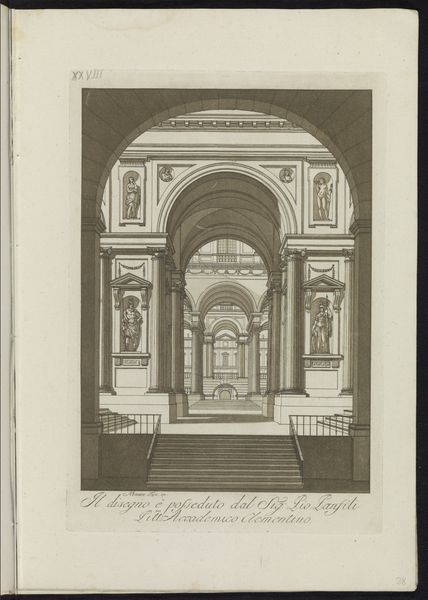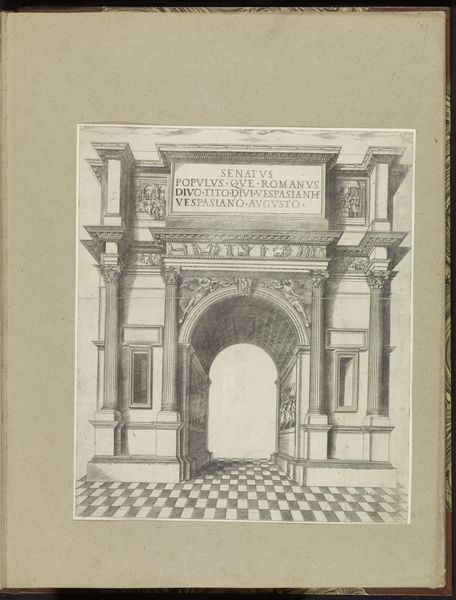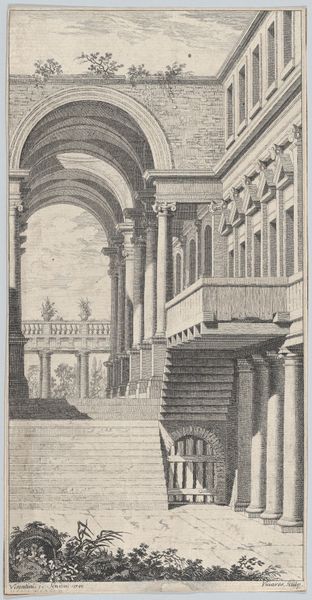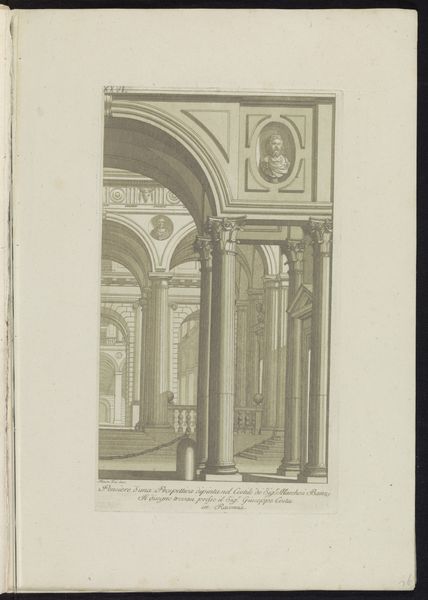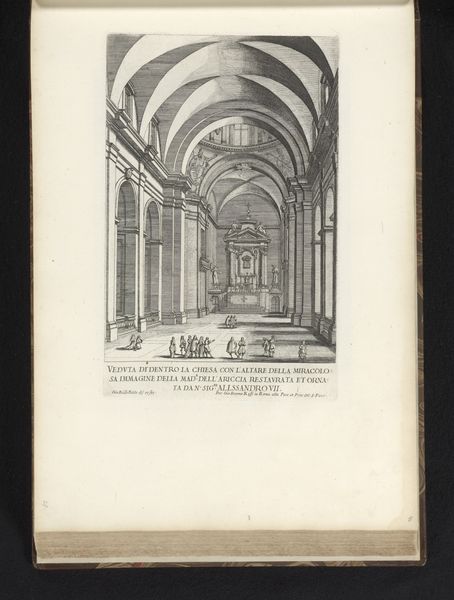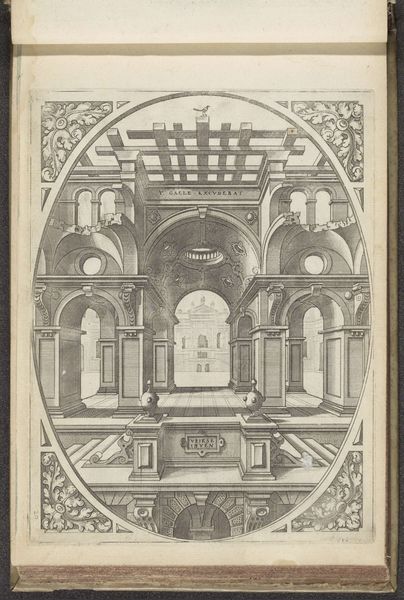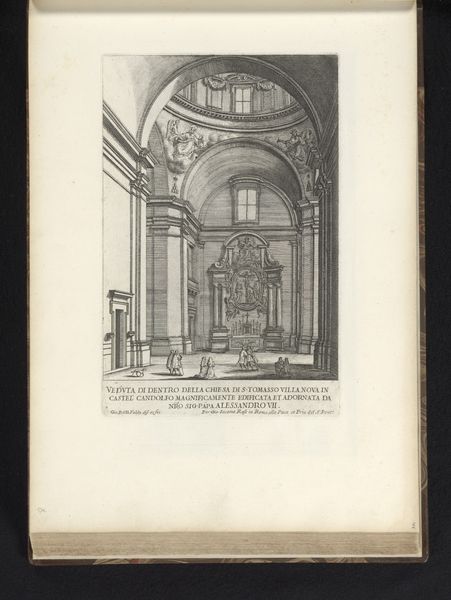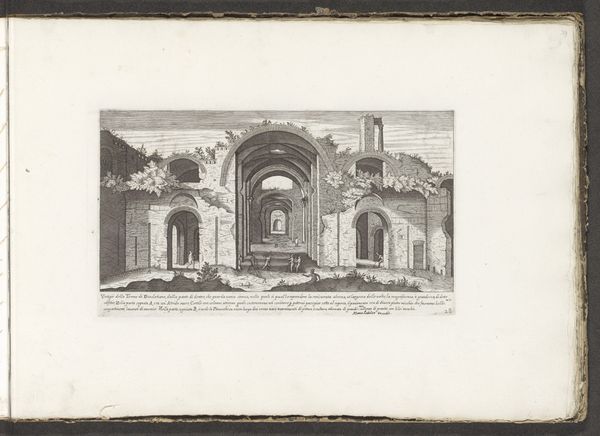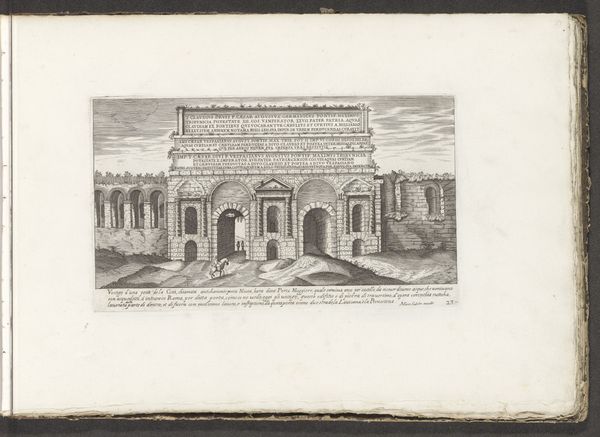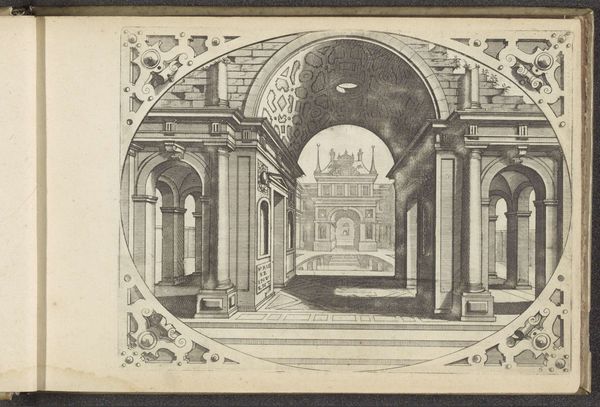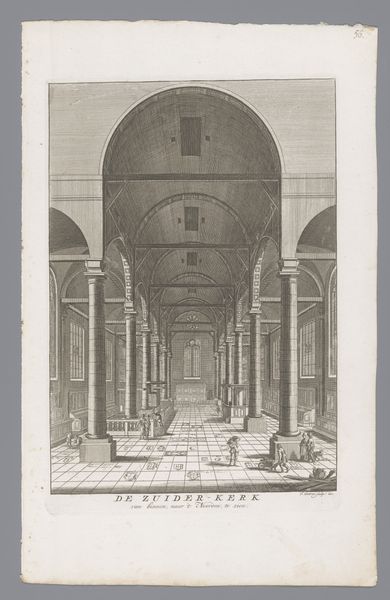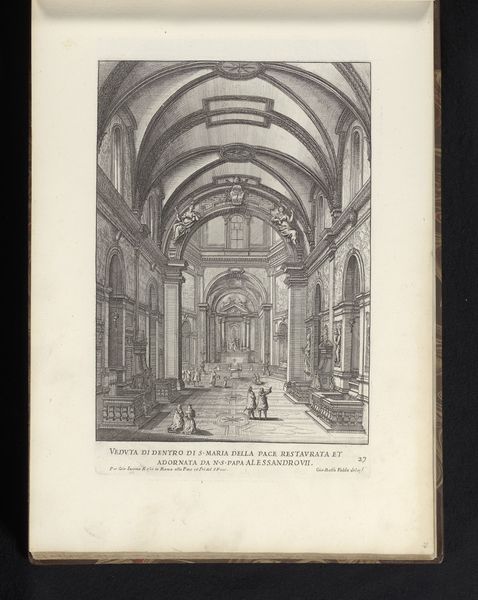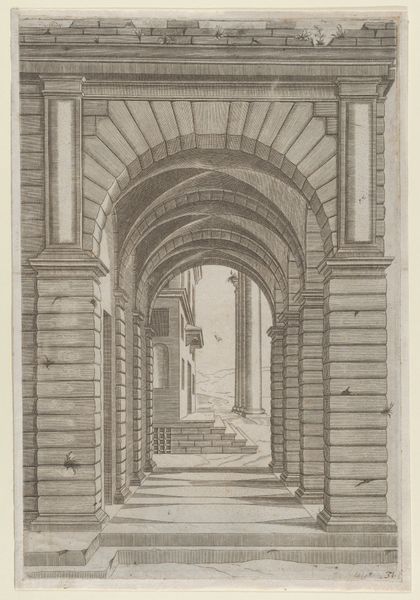
drawing, paper, pencil, architecture
#
drawing
#
paper
#
geometric
#
pencil
#
italian-renaissance
#
architecture
Dimensions: height 460 mm, width 308 mm
Copyright: Rijks Museum: Open Domain
Editor: This pencil drawing on paper, titled "Architectuurstudie," is attributed to an anonymous artist and dates back to the Italian Renaissance, between 1595 and 1622. There's such incredible detail, even though it's a study, creating this depth through these architectural lines. What catches your eye about it? Curator: The rigid geometric forms and stark contrasts create a powerful impression of rational design during that time. Given its historical context, I immediately think about the power dynamics inherent in architectural representation. Consider the patrons who commissioned such designs - what social strata did they occupy, and what messages were they trying to convey through these proposed buildings? Editor: So, beyond just showing a building, it’s reflecting power and status? Curator: Precisely. These weren't just architectural blueprints, they were also visual assertions of authority and a desire for immortality. The illusion of space within this flattened perspective offers a view into the culture and political aspirations embedded in architectural plans. Are you picking up on what this artwork shows us of architecture beyond building function? Editor: Yes, definitely. The choice of specific geometric shapes and even the artist's choice of depicting the site this way show what was most valued. Thinking about today, does that mean every architectural rendering is a political statement, whether we see it or not? Curator: The medium is often the message! To an extent, yes. Contemporary architectural renderings continue to mediate power relationships and often imply or erase cultural context. Think about minimalist or maximalist aesthetics today...what values do they embody or dismiss? Editor: This gives me a lot to think about as I observe art. I now see the artwork speaks not only of building design, but communicates cultural values through representation. Curator: Agreed. The interplay between the formal artistic components and cultural commentary is often what resonates long after we’ve left the gallery.
Comments
No comments
Be the first to comment and join the conversation on the ultimate creative platform.

